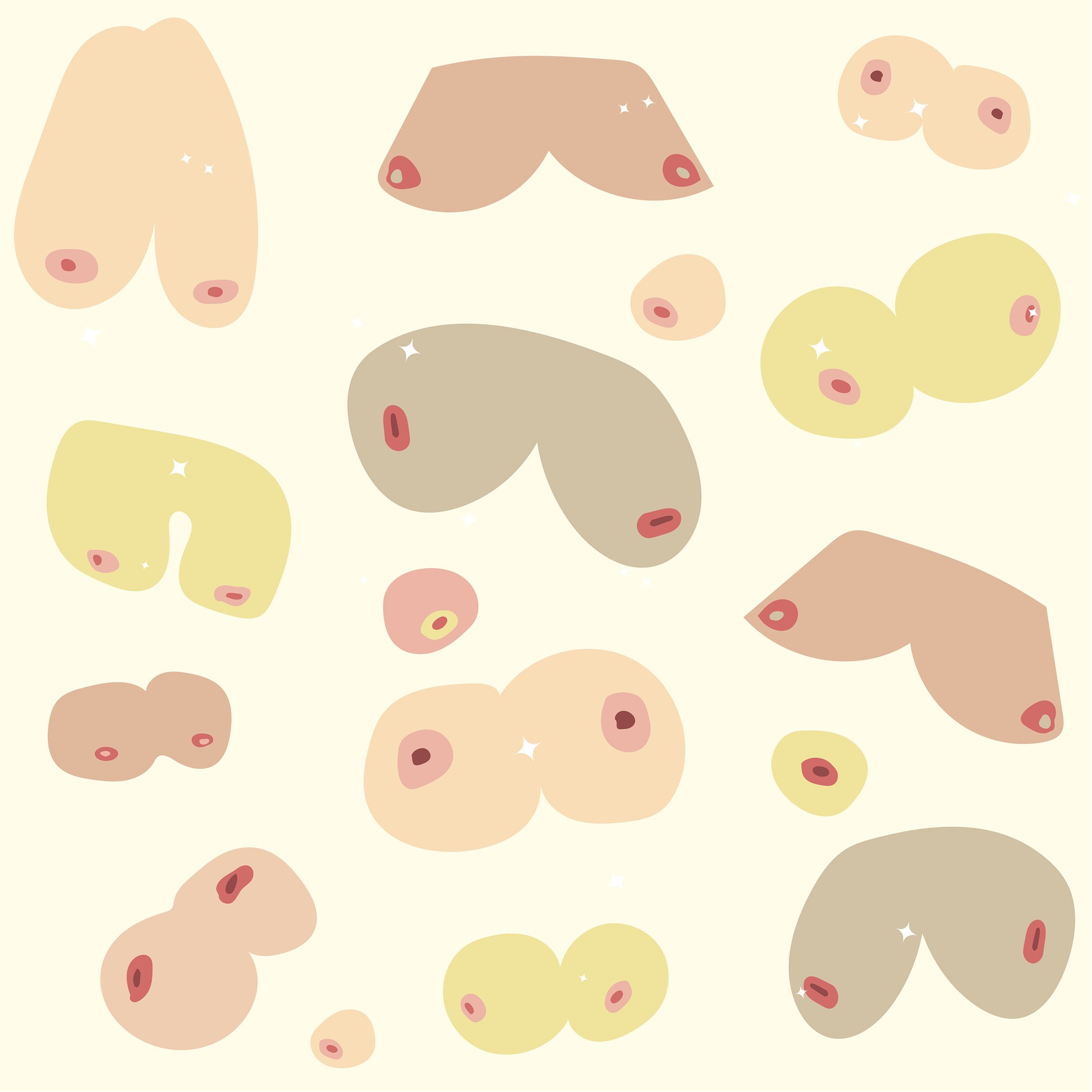A breast-shaped void: where are they in the new relationships education curriculum?
After a long wait and a thorough consultation with more than 11,000 responses, the Department for Education released its updated guidance for Relationships, Sex and Health education a few weeks ago. From 2020, relationships education is compulsory in all primary schools in England and sex and relationships education is compulsory in all secondary schools.
As the chair of the Association of Breastfeeding Mothers and someone who writes about breasts for parents and young people, I predictably jumped on my computer minutes after its announcement and searched the fifty-page document for the word ‘breast’. There are zero responses.
Disappointing.
While menstruation gets 13, and even gets its own sub-heading.
The PSHE Association scheme of work is recommended as a resource to be used in schools. Let’s check there. A scheme of work that covers 5-to-18 year olds. Anything about breast development, breast function?
There are three mentions of the word breast: two are about breast self-examination. Girls are taught about when their breasts are dangerous and pathological, but not when they are healthy and functional. The final reference in Key Stage 4 (14-16 year olds) talks of “parenting skills…to be able to make informed choices about parenting including issues around breastfeeding.”
‘Issues around breastfeeding’: there’s a phrase that doesn’t warm the cockles of your heart. Those of us who work to support new families to feed their babies can tell you something about the issues around breastfeeding. Girls are growing up not knowing how their own bodies work. They don’t know how breasts start to develop, so spend months thinking they may have cancer (because that’s the only time lumpy tender asymmetrical breasts get a mention) or they are abnormal. They are taught that breasts are to be hidden away and nipples made invisible. But then confusingly, women who show them in particular ways often seem to get more attention, especially on social media.
Girls rarely know that their breast tissue goes into their armpit. They can rarely use the word for the coloured ring of skin around the nipple (the areola) and they even less commonly know how to say it. It’s a clue this is a nationwide problem when 3 different pronunciations are all considered acceptable: arry-oh-la, a-ree-oh-la, uhrowla. They don’t know the very simplest facts about how their body might milk in the future or that breastfeeding isn’t just about making milk anyway but giving comfort, developing relationships and reducing their risk of maternal mental health problems.
The guidance claims to be about promoting healthy relationships, positive mental health and it claims to be about valuing parenthood. But there is a huge hole – and it’s breast-shaped.
If normal breast development and breastfeeding isn’t discussed in schools, we see the consequences years later when parents are expected to gain all their knowledge and confidence between finding out a baby is expected and its arrival. In 2017, The Royal College of Paediatrics and Child Health called on government to put breastfeeding into the school curriculum and that call has been ignored. It’s not about getting everyone to breastfeed. Some mums don’t want to, and some mums are unable to, but we know around 80% try to start and more than ¾ of them are let down by lack of support. We end up with a country with some of the lowest breastfeeding rates in the world as a result.
The new curriculum covers some tough realities: forced marriage, honour-based violence and FGM. Children are to be taught about the treatment of sexually transmitted infections and that alcohol and drugs can lead to risky sexual behaviour. They are taught about adopting and aborting a baby, but not feeding one. In Scotland, we can see places where breastfeeding is on the curriculum and schools can even be awarded ‘breastfeeding-friendly’ status. Why is England not joining up the dots? It’s not happening in this new guidance and it’s not happening in the science curriculum where pupils are taught about ‘the effect of the maternal lifestyle on the foetus’ but nothing about breastfeeding.
You can’t talk properly about ‘the changing adolescent body’ without saying the word ‘breast’. And if you don’t talk about breastfeeding, and instead the breast is simply a sexual organ, you are missing a huge section of the human experience.
If we don’t talk about healthy normal breasts openly, then when it DOES come time to worry about breast self-examination, the discussion is uncomfortable and embarrassing. Young women avoid doctor visits and worry alone. If we don’t talk about what breasts can do, that gap gets filled with a conversation controlled by photo-shopping, air-brushing and breasts as commercial tools to sell products. When girls and women don’t feel like they are good enough, they are encouraged to spend money to fill the void. And women who don't feel they are good enough and their bodies are deficient become mothers who don't feel their bodies are good enough.
We might imagine that retail and modelling has become more body positive but look closer. Breasts aren’t yet part of that conversation. The larger models being used have round, even, symmetrical breasts with invisible nipples. Attractive models of any size don’t sag, breasts are immoveable and symmetry is essential. We have a long way to go and it’s dangerous when we think ‘real women’ are being celebrated when parts of them are still required to fit an ideal of artificial perfection.
We need to get this right now. We need conversations in schools and we need to talk about real breasts doing real things. If we don’t get this right, those of us supporting new mums, and talking to young women about their body image, will pick up the pieces in years to come.
